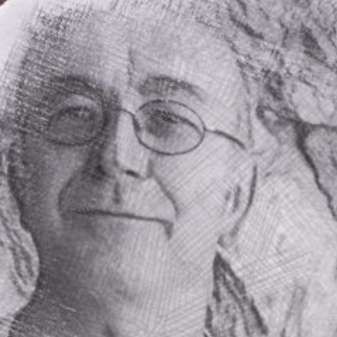Stars of Lammermuir’s 2011 Musical Journey, the Navarra Quartet returned for two 2012 dates. The first of their engagements featured a single Haydn work: The Seven Last Words of Christ on the Cross (1787).
The prospect of seven slow movements, framed by “Introduzione” and “Il Terremoto” (“Earthquake”) might strike some as a marathon. However, this programme is dwarfed by comparison to the work’s original circumstances. Commissioned by Cádiz Cathedral, the movements of the orchestral original were intended to punctuate a lengthy service, involving declamation of the last words followed by a discussion on their meaning.
This performance by the Navarra Quartet lacked such liturgical dimensions, but several elements favouring meditations on the text were present for those so inclined: the beautiful location of St. Mary’s Parish Church, Haddington, the candlelit setting (which often quietens the mind), and a series of projected paintings by Australian artist Jamie Boyd. To my untrained eye, these works harked back to Chagall and Gaugin. Boyd’s contribution to the programme notes describes how they were “painted while listening to Haydn’s music and after only a cursory glance at the text”. That the paintings are not figurative in any strict sense of the word resonates with this.
The acoustic of the church lent great atmosphere to the dramatic opening, and overtones of chords haunted the sudden pauses. The “Introduzione” had the dark key of D minor, and the sinister feel was emphasised by two rhythmic elements: grave-sounding dotted rhythms and pulsing, repeated notes, suggesting unstoppable fate. Attention to dynamic detail was impressive here and the tone of what was about to unfold was authoritatively set.
Exactly how to achieve unity and diversity within seven slow movements troubled Haydn. Seven minor-key movements would soon pall and, given that the movements flanking the seven Sonatas are all minor, it should not surprise us that Haydn includes four major-key movements. His unifying stroke of genius was to feature the falling interval of a minor third across the work as a whole. This interval occurs in both major and minor keys, meaning some flexibility in the tonality. Research into connections between music and language has thrown up the idea of “motherese” – a commonality in the prosody of mothers of infants, regardless of language and culture. The falling minor third has been found to be a much favoured sound in affectionate dialogue. That idea that Haydn intuitively felt this is quite appealing; more so that of the four movements featuring its extensive thematic use, one is “Mulier ecce filius tuus” (“Woman, behold your son”) which opens with two falling minor thirds. This movement was played with great delicacy a lovely sense of pace.
However, there is much more to Haydn’s harmonic mastery than direct major/minor contrast. The opening Sonata, “Pater, dimitte illis, quia nesciunt faciunt” (“Father, forgive them, for they know not what they do”), begins with short, separated, declamatory phrases and very simple harmony. This is later followed by serpentine chromaticism. This very effective contrast was brought out tellingly by the Navarra Quartet with a change in articulation which brought about as much change in body language as in sound.
The central Sonata deals with the moment of apparent wavering in Jesus’ own faith, when he cries out “Deus meus, Deus meus, utquid dereliquisti me?” (“My God, my God, why hast Thou forsaken me?”). An anguished mood already in place thanks to the tonality of F minor, the sense of perceived abandonment is clinched by solo passages for the first violin. These were very movingly played by Magnus Johnston.
One might imagine that the movement entitled “Sitio” (“I thirst”) might feature the most faltering and embittered opening, especially when we know the remedy offered. The falling minor third is certainly present but in a major key and in a surprisingly light pizzicato texture. However, a much more angular interruption soon follows. The Navarra Quartet’s fine sense of ensemble was very much in evidence in the rapidly changing dynamics and textures of this movement.
The opening five-note G minor motif of “Consummatum est” (“It is finished”) requires, and was played with, as much drama as the opening. Following some searching counterpoint, the mood subsides and a much lighter theme in B flat emerges. This transformation was very convincingly handled by this young quartet. The perhaps surprising G major coda section was delivered with similar sanguinity.
A meditative concert based on such subject matter is never going to end on a knees-up. And an earthquake is possibly the only realistic lively exit. This “Terremoto” was performed just as Haydn requested: “Presto e con tutta la forza” (“fast, and with all possible force”). Having already played for over an hour, the Navarra Quartet delivered the work’s geological conclusion as though they had plenty of fuel left in their tank.


